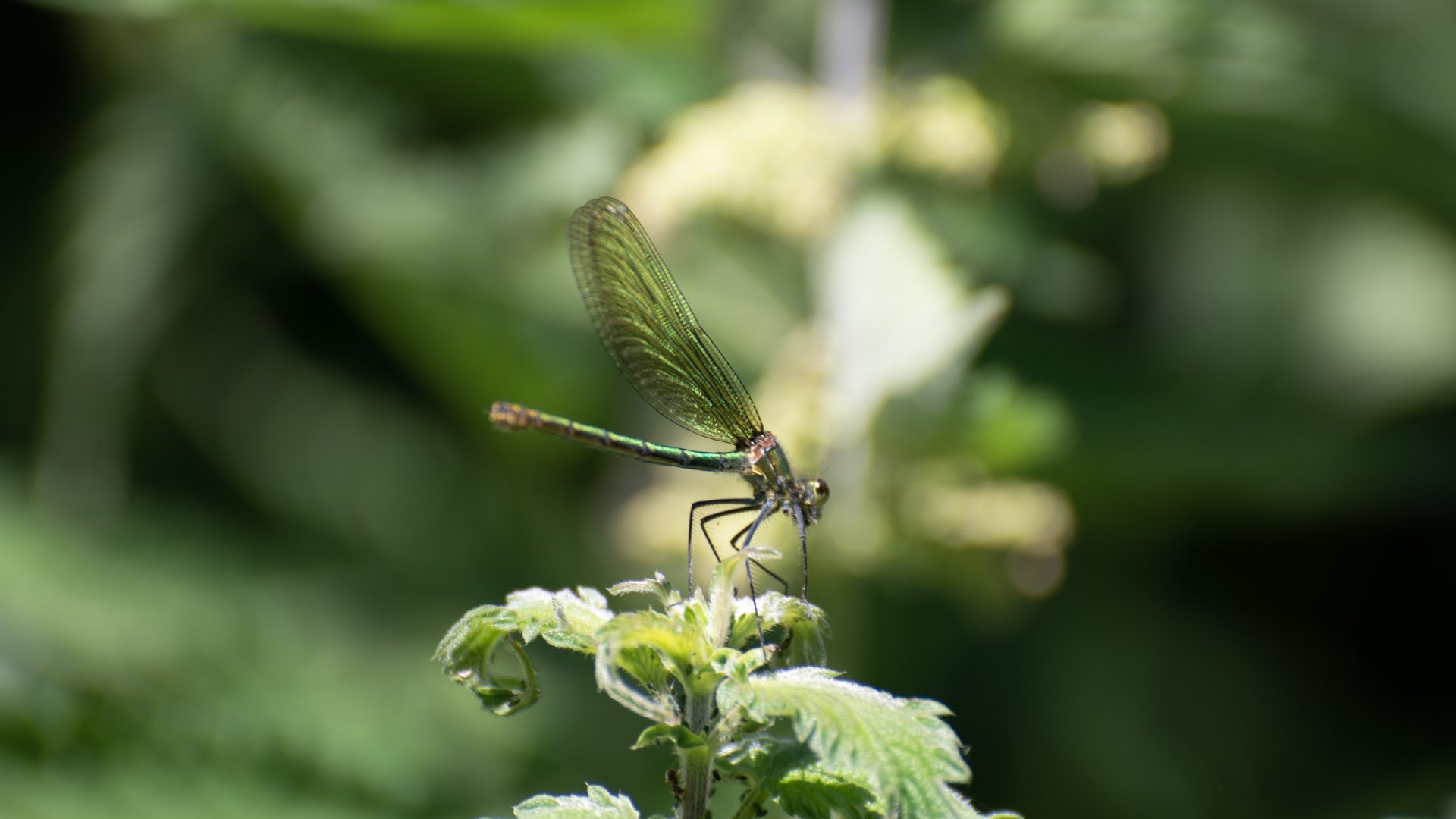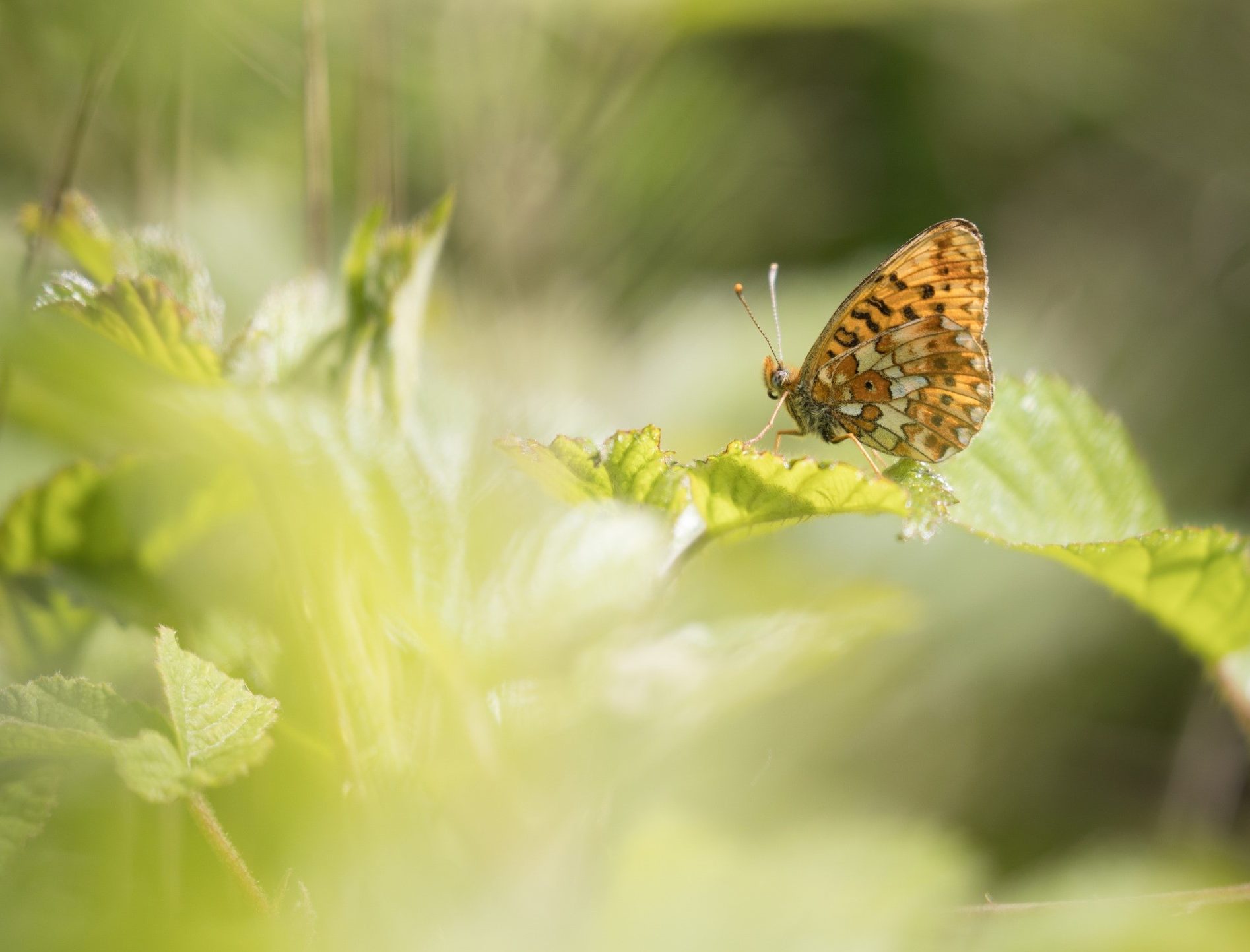Published: 30 May 2024
From where to spot the rarest species to the threats and solutions for national populations, we’re zooming in on some small but mighty heroes of National Parks.
The classic soundscape of a National Park; the crunch of leaves underfoot, birdsong from above and the lively buzz of insects. From our bumblebees and moths to beetles and butterflies, insects are the beating heart of many of our Parks. In recent times, national insect populations have plummeted, and National Parks are home to some of the precious last habitats for the most endangered.
Do you know your marsh fritillary from your red admiral? Or where to spot the rarest species? Read on for more about some of the insects that call National Parks home.
Butterflies and bees
Late spring and early summer are some of the best times to see butterflies in our National Parks. The grasslands, wet woodlands and wetlands of the Broads are home to a variety of common and rare species. June is a great time to see Britain’s largest butterfly the Swallowtail which can now be found nowhere else. Look out for their distinctive yellow, blue and red colouring, and wingspan of up to 9cm.
Insect larvae and caterpillars enjoy feeding on the variety of grasses and other plants common in meadows and grassland. According to the National Park Authority, the South Downs houses 23 species of dragonfly and 39 different species of butterfly, as well as a variety of solitary and bumblebees. These pollinators are vital to the health of the chalk grasslands which give them a home.
It’s not just grassland that is important to our insects. Many moth species prefer tougher plants found in hedgerows and heathland, overwintering in cocoons sheltered by heather and bramble common in upland National Parks like the North York Moors and Yorkshire Dales. Insects also thrive where you might least expect it like the mining bees found in the sand dunes of Eryri’s coast.
Tiny creatures, big impact
Insect life is vital to the health of almost all landscapes and ecosystems in the UK. Insects pollinate wild plants and crops, provide food for birds, bats and other small mammals, and recycle nutrients to keep soil healthy.
But sadly, insects are also some of our most threatened wildlife having lost their habitats to urban development and biodiversity loss. Understanding the vital role that these small but significant creatures play is vital to nature restoration efforts across our Protected Landscapes.
Conserving insects
The intensification of farming is one of the biggest drivers of insect threats. The use of harmful pesticides and destruction of biodiverse grasslands mean that insect populations are in steep decline. Traditional land management techniques and farming practices that work with nature are key to keeping this relationship in balance. The reintroduction of hedgerows, creation of grass verges and reduced insecticide use are other examples of farmers doing great work to restore this cornerstone of National Park nature.
There are also many ways National Parks can restore their insect populations on a landscape scale and things you can do, like growing pollinator-friendly species in your garden and letting patches of lawn grow wilder.
Our recent landmark Health Check report found an urgent need to restore nature across our National Parks. It is thanks to support from our Friends that we are able to continue work like this to fight for all the important wildlife that call National Parks home.
Read the report


